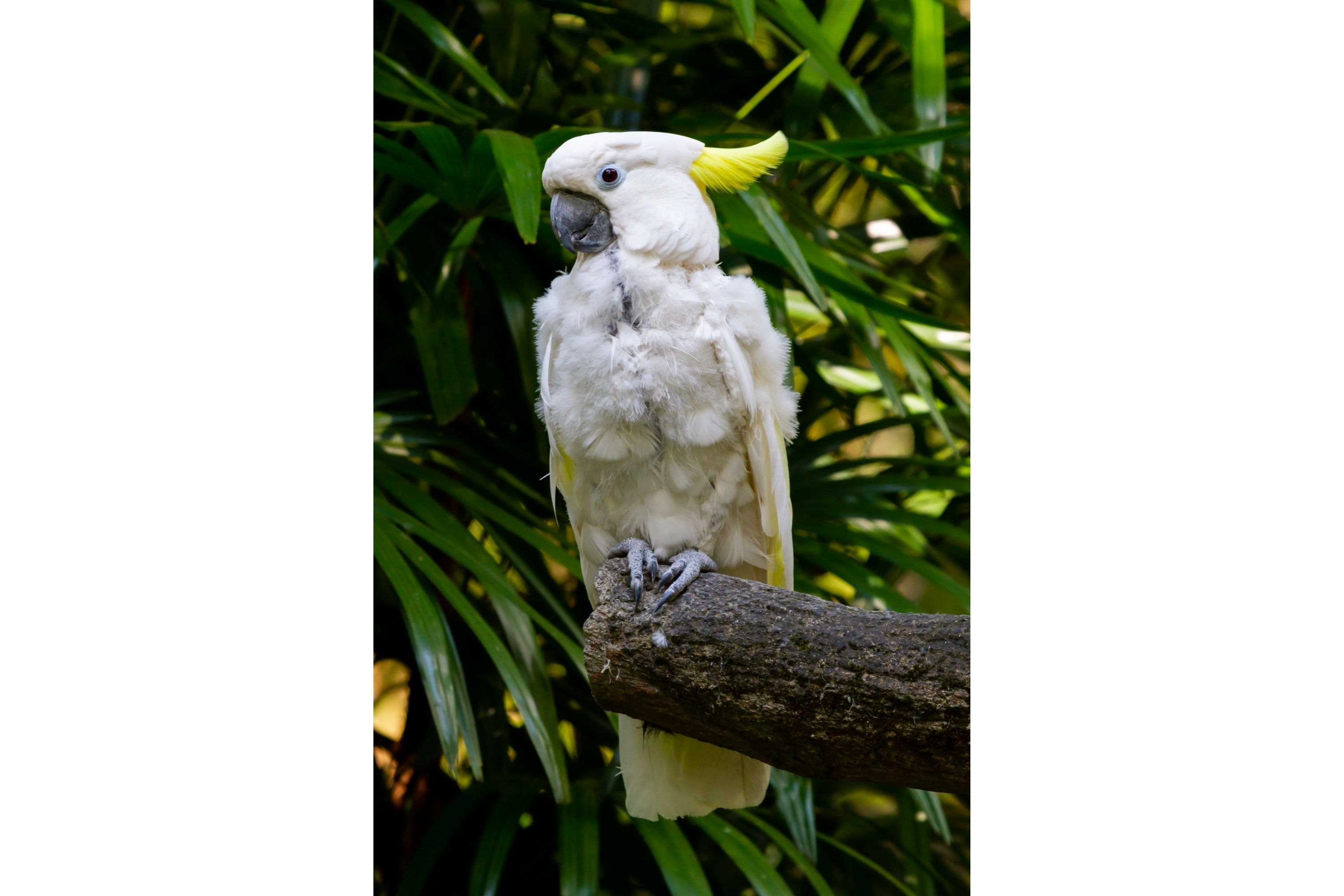Sulphur-crested cockatoo
(Cacatua galerita)

Description
The sulphur-crested cockatoo (Cacatua galerita) is a relatively large white cockatoo found in wooded habitats in Australia, New Guinea, and some of the islands of Indonesia. They can be locally very numerous, leading to them sometimes being considered pests. A highly intelligent bird,they are well known in aviculture, although they can be demanding pets. It is similar in appearance to the three species of corellas found in Australia. However, corellas are smaller, lack the prominent yellow crest and have pale bills. In captivity, the sulphur-crested cockatoo is easily confused with the smaller yellow-crested cockatoo or the blue-eyed cockatoo with a differently shaped crest and a darker blue eye-ring. Sulphur-crested cockatoos' distinctive raucous calls can be very loud, which is a result of an adaptation in order to travel through the forest environments in which they live, including tropical and subtropical rainforests. These birds are naturally curious, as well as very intelligent. They have adapted very well to European settlement in Australia and live in many urban areas. Being intelligent, in Sydney, Australia they have learned how to open garbage bins as a source of food.The behavior spreads among the birds by imitation.In captivity some will spontaneously dance to music with a variety of unique moves. These birds are very long-lived, and can live upwards of 70 years in captivity,although they only live to about 20–40 years in the wild. They have been known to engage in geophagy, the process of eating clay to detoxify their food. These birds produce a very fine powder to waterproof themselves instead of oil as many other birds do. The sulphur-crested cockatoo is a seasonal breeder in Australia; little is known about its breeding behaviour in New Guinea. In southern Australia the breeding season is from August to January, whereas in northern Australia the season is from May to September.The nest is a bed of wood chips in a hollow in a tree. Like many other parrots it competes with others of its species and with other species for nesting sites. Two to three eggs are laid and incubation lasts between 25–27 days. Both parents incubate the eggs and raise the nestlings. The nestling period is between 9 and 12 weeks, and the young fledglings remain with their parents for a number of months after fledging.
Taxonomic tree:







